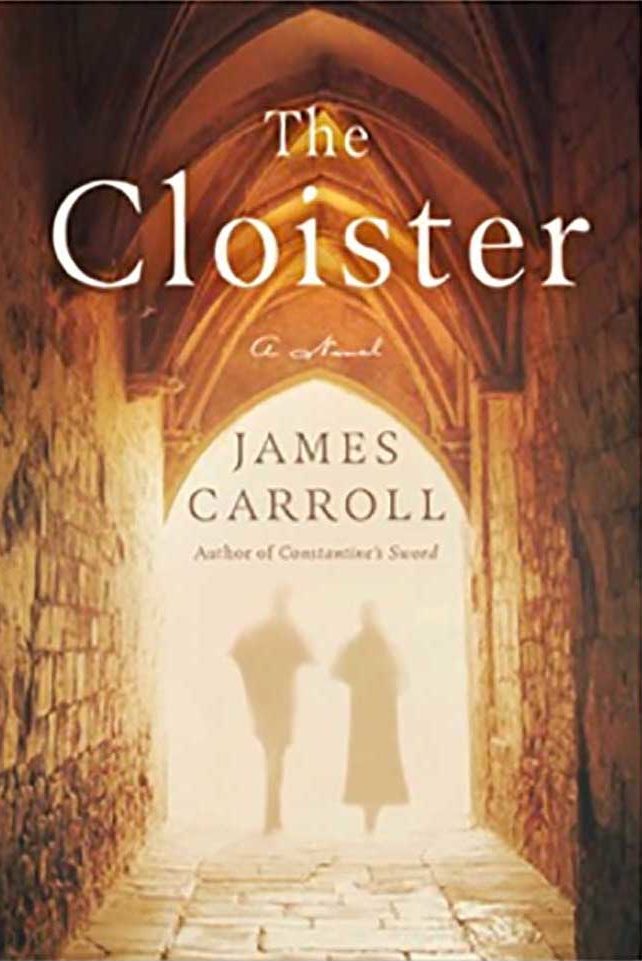The Cloister
by James Carroll
reviewed by Yun Ni
A former Catholic priest, James Carroll has produced a number of books on religion and politics, the most acclaimed and controversial of which is the New York Times Best Seller Constantine’s Sword: The Church and the Jews, a history of Roman anti-Semitism. His new novel, The Cloister, successfully continues this theme, but surprisingly uses the romance of the twelfth-century French scholar-monk Peter Abelard and his pupil Héloïse as an entry point.
The Cloister follows three plotlines in distinct settings: the true love story of the Abelard and Héloïse; the narrative of a fictional Jewish-French medievalist, Saul Vedette, who during the Nazi occupation of France tries to prove that Abelard authored a series of anonymous works sympathetic to Judaism; and the story of Saul’s daughter Rachel in post-war New York, and her friendship with an Irish-American Catholic priest, Michael Kavanagh. In navigating historical crosscurrents, Carroll reveals that while academia and the church seem to celebrate intellectual inquiry and to operate at the limits of human knowledge, they are in fact enclosed territories; anyone who tries, as Carroll’s protagonists do, to push the boundaries of each risks severe punishment.
Carroll bridges the medieval and modern through his depiction of timeless scholarly pursuits that challenge the ethos of their respective times. Abelard was excommunicated for his study of logic, which, if pushed to an extreme, pointed toward a theory of universal salvation that refused to condemn the Jews and therefore was in tension with certain aspects of Catholic theology. The church silenced Peter Abelard and the Nazi Party imprisoned Saul Vedette. However, physical isolation does not diminish the two scholars’ intellectual pursuits. Vedette is, in Carroll’s words, “the archaeologist of the national soul” who recovers Abelard’s Jewish-friendly scholarship in order to illumine present persecutions. Putting a vivid depiction of Abelard’s classroom of logic alongside a detailed account of Vedette’s research, Carroll shows his readers the intellectual companionship of two men separated by eight centuries.
While Abelard’s scholarly pursuits find a parallel in Vedette’s work, his forced separation from Héloïse is more akin to the troubled personal histories of Rachel and Kavanagh, both of whom are unable to forgive themselves from abandoning loved ones in their time of need: Rachel survives her father, who dies in Nazi-occupied Paris, by denying being his daughter; Kavanagh’s best friend was accused of harboring homoerotic feelings towards him, and banished from the church as a result. Disclosing their histories to one another, Rachel and Kavanagh first interrogate and then lay to rest their guilt. They begin their relationship, like Abelard and Héloïse, as intellectual interlocutors, but when they find redemption, it is through their mutual trust and emotional understanding, not academic rigor.
The deep sympathy that Carroll brings to his protagonists is not universal. His depiction of the institutional figures who oppose Abelard is unambiguously hostile; two real-life twelfth-century abbots, Bernard of Clairvaux and Abbot Suger, are portrayed as being driven by “secular” territorial ambition, political convenience, and personal feuds. Abbot Suger blackmails Héloïse in order to seize her land at Argenteuil for tariffs, and Bernard manipulates the king by using the schism of the church as a weapon against Abelard’s philosophy. But occasional cartoonish characterization does not undermine Carroll’s beautifully crafted work. He brilliantly weaves together the medieval and modern, the intellectual and affective, the closed and open. The transformations of the characters in the parallel plotlines are equally convincing and compelling. Cloister, from the Latin word “claustrum” (closed), symbolizes enclosure and isolation, but each encounter between the novel’s characters opens up myriad possibilities.
Published on June 11, 2019

